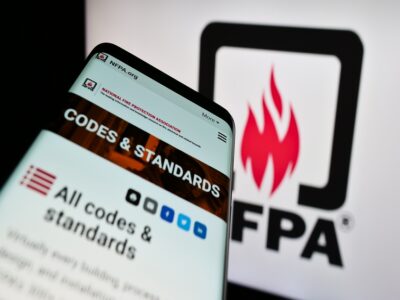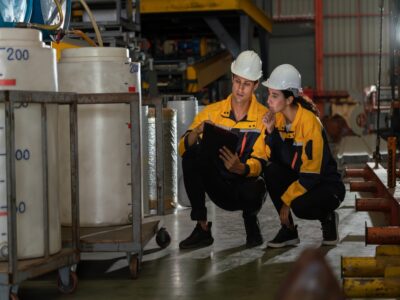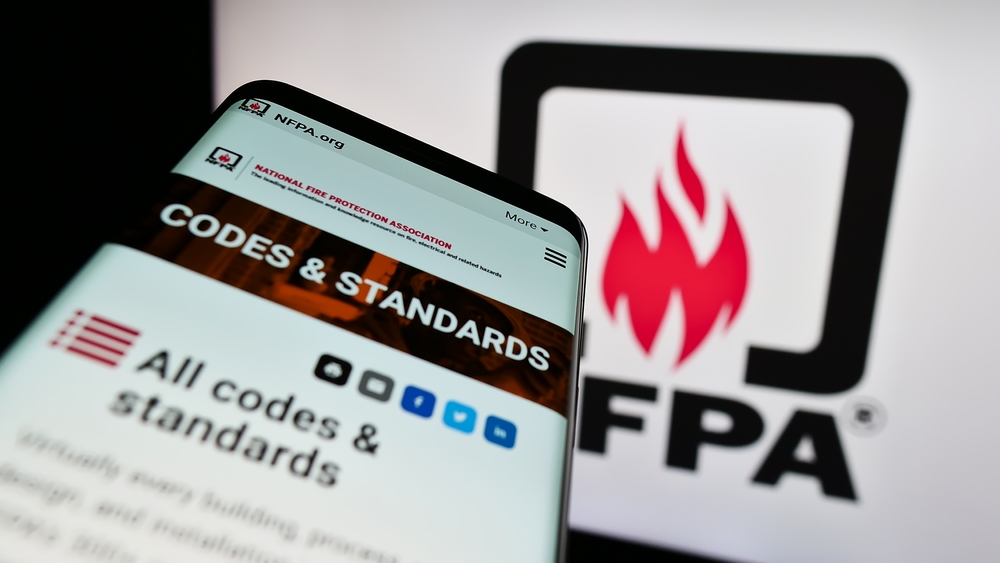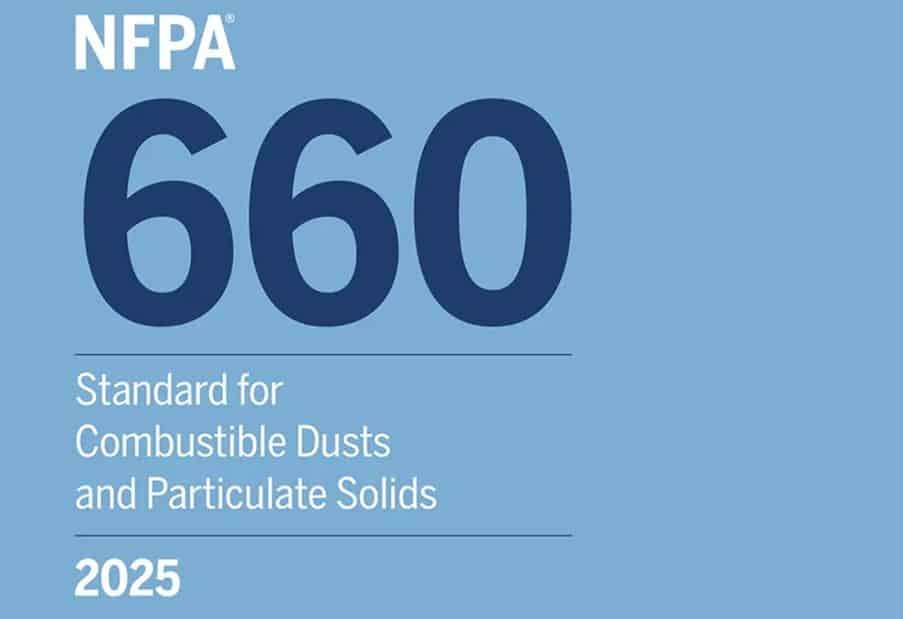Search
Time for a DHA Revalidation? Understanding NFPA 660’s Five-Year Rule
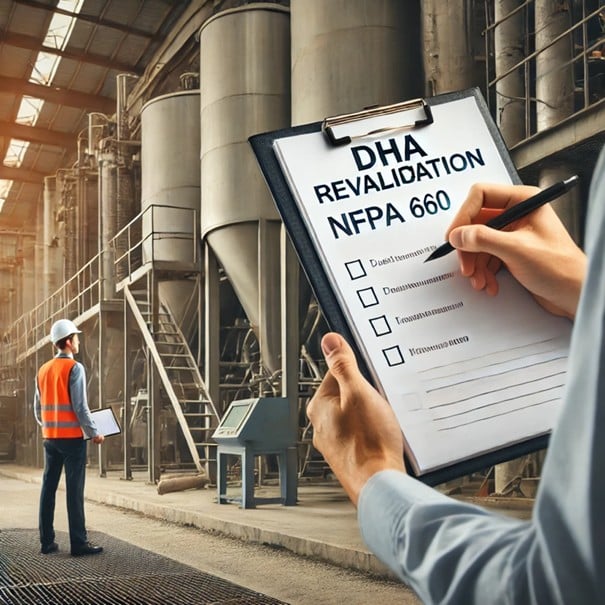
For companies handling combustible dust, the past few years have seen a transformation in safety standards. One of the most critical milestones was the release of NFPA 652: Standard on the Fundamentals of Combustible Dust in 2015, which formally introduced the requirement for Dust Hazards Analyses (DHAs). Many facilities completed their first DHA in the following few years, ensuring compliance with NFPA standards and significantly improving safety.
Fast forward to today, and a valuable shift has arrived: NFPA 660, the new consolidated standard for combustible dust safety. NFPA 660 replaces NFPA 652 and commodity- and industry-specific dust standards, streamlining compliance while reinforcing key requirements—including the obligation to revalidate DHAs at least every five years. For many companies, that means their initial DHA is due for review and revalidation NOW.
So, what does this mean for your facility? Well, if you haven’t done so already, chances are it’s time to take action to ensure continued compliance and maintain a safe working environment.
Why Revalidate? Understanding NFPA 660’s Requirements
NFPA 660 affirms that DHAs are not a one-time exercise. Facilities that handle combustible dust must revisit and update their DHAs at least every five years. Why? Because operations, equipment, processes, and even materials (combustible particulate solids, powders, dusts) evolve over time, and these changes can introduce new hazards that may not have been present at the time of the original DHA.
Common facility changes that could impact your DHA include:
- New equipment: Changes in processing equipment, ductwork, or material handling may alter airflow, dust dispersion, or ignition risks.
- New powders or altered formulations: Different powders have different “ignition sensitivity”, “Static Electricity”, and “explosion severity” characteristics.
- Process modifications: Altered or expanded production lines could introduce new hazard scenarios.
- Housekeeping and maintenance updates: Adjustments to cleaning schedules or maintenance procedures may affect dust accumulation rates.
- New regulations or standards: NFPA 660 incorporates the latest industry knowledge and best practices, which your original DHA may not reflect.
Revalidating your DHA is not just about compliance—it’s about proactively managing risk, protecting employees, and preventing catastrophic dust explosions. Many insurance providers and regulatory authorities increasingly expect organizations to maintain current, documented hazards & risk assessments as part of their safety programs.
How do we Approach DHA Revalidation?
At Stonehouse Process Safety, we recognize that DHA revalidation is not just about ticking a regulatory box—it’s about ensuring that your operations remain as safe and efficient as possible. Our systematic approach to DHA revalidation ensures that facilities not only comply with NFPA 660 but also gain valuable insights into their evolving risk profile. The good news is that revalidation is likely to be a quicker and lower-cost exercise than your first DHA!
Our revalidation methodology includes the following key steps:
1. Review of the Original DHA
We begin by reviewing your existing DHA to assess its findings, recommendations, and any assumptions made at the time. This allows us to identify critical focus areas for revalidation, ensuring that our approach is both targeted and efficient.
2. On-Site Assessment and Hazard Identification
A site visit is conducted to:
- Inspect changes in equipment, processes, facility layout, or powders/dusts made since the previous DHA and assess how they have impacted dust explosion hazards.
- Evaluate modifications to ignition source control, housekeeping, and explosion protection measures.
- Verify that previously identified hazards have been effectively mitigated and determine whether new hazards have emerged.
3. Updated Dust Testing (if required)
If new materials or processes have been introduced, we can conduct dust combustibility and explosibility testing to ensure that hazard characterizations remain accurate. This step is crucial when working with new suppliers, formulations, or modified processing conditions. Critical material properties include (chemical) composition, particle size, and moisture content. If these have changed since your last DHA, chances are the dust explosion properties have also changed; re-testing powder’s fire and explosion properties may be needed.
4. Hazard Reassessment and Compliance Check
Using the updated facility data, we re-evaluate:
- Potential ignition sources and whether mitigation strategies remain effective.
- Housekeeping and maintenance practices to determine if hazardous dust accumulation is being controlled.
- Fire and explosion protection systems, ensuring they are properly maintained and aligned with the latest NFPA guidance.
Cross-check findings against NFPA 660 and regulatory requirements to verify full compliance with the latest safety expectations.
5. Delivering the Updated DHA Report
Finally, we provide a revised DHA report, outlining:
- The current hazard landscape.
- Any new risks identified.
- Practical, actionable recommendations for mitigation.
- A clear roadmap for maintaining compliance with NFPA 660.
Why Partner with Stonehouse for your DHA Revalidation?
Choosing the right partner for DHA revalidation is critical. At Stonehouse, we bring deep expertise in combustible dust safety, having played an active role in shaping industry standards, including NFPA 660. Our specialists are not just compliance experts—they are experienced engineers who understand real-world plant operations and practical risk management.
By working with Stonehouse, you gain:
✅ Industry-leading expertise in combustible dust hazard assessments.
✅ A practical, tailored approach focused on operational efficiency.
✅ Comprehensive compliance assurance, ensuring you meet NFPA 660 and insurance requirements.
✅ Confidence in your safety measures, helping you reduce risks and avoid costly incidents.
As your five-year DHA revalidation deadline approaches, now is the time to act. Don’t wait until compliance becomes an urgent issue—proactively managing your DHA ensures your facility remains safe, compliant, and prepared for the future.
Act Now: Schedule Your DHA Revalidation with Stonehouse
NFPA 660’s five-year rule is here, and many companies are due for DHA revalidation. Ensuring compliance isn’t just about meeting regulations—it’s about protecting your workforce and operations from preventable hazards.
Let Stonehouse Process Safety help you navigate this transition seamlessly. Contact us today to discuss your DHA revalidation and receive a tailored proposal that aligns with your facility’s needs. Stay safe, stay compliant, and stay ahead with Stonehouse.

Get in touch
To learn more about our expertise and services in dust explosion prevention & mitigation, call us at +1 609 455 0001 or email us at [email protected] today.
We also offer tailored virtual and in-company process safety training programs on Dust Explosions, Static Electricity and HAC (Hazardous Area Classification) and more. Find further information here.
